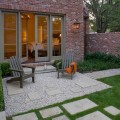Formal Flower Garden
A formal flower garden is distinguished from a regular flower bed or decorative garden by two important characteristics. The first of these is deliberate patterning. By deliberate patterning, we mean the creation of immediately recognizable geometric shapes such as squares, rectangles, spirals, semi-circles, and circles.
The second key element is functional division. By this we mean some sort of dividing axis runs through the garden center. This axis can be anything from a simple gravel path to an ornate stone walkway. Either way, it provides a transition element that allows the garden to be viewed from within as a person strolls through its interior.
Unlike French, English, and Italian gardens, formal flower garden design is not derived from any one specific time in history or single culture of origin. All people groups since the beginning of civilization have used flowers in their gardens to some extent or the other.
In formal flower gardens, the flowering plants of these many forms are extracted and customized into an individual formal design unique to the individual homeowner, residence, geography, and situation at hand.
In this since, it is a very personal and customized type of garden design and offers your property tremendous potential for improving curb appeal.
The formal principles of design, however, are strictly adhered to as they are in traditional styles. Geometry and carefully maintained boundaries are needed to establish order and system as the basis of the form. Geometry can be very strict, tight, and linear to create a feeling of maximum control and Classical discipline. Flower gardens in this style are typically square or rectangular in shape.
In other cases, formality is respected, but not fanatically followed. A softer sense of design is created by basing the garden design on radial forms. Arcs, half-circles, and full circles create a sense of warmth and embrace. Contoured borders make it possible to adapt the formal flower garden as a supporting element adjacent to a non-linear surface, such as a custom pool patio. Spirals create a sense of sweeping, outward expansion, which can be used to create an optical illusion that the garde is much larger than it is.
In order to create such complex patterns, formal flower gardens rely upon two very important principles of design. The first of these is plant spacing. Relationships between plants are established in the very beginning by carefully calculating the distance between each individual plant.
If the garden design wants to create a very tight sense of linearity and control, blocks of flowering plants that bloom with the same color will be planted very close together. This will cause a single pattern to emerge as soon as the flowers appear.
If a more gentle and natural look is desired, drifts of flowering plants can be used to spread out the color along a garden edge that advances and recedes in various places. In highly customized designs, colors can even be sparingly mingled to accent focal points, although this should only be done by a professional landscaper. Too much color in one spot, or too many plant species all together, can make a formal flower garden appear wild and out of controlled no matter how carefully it is maintained.
The second design principle is that of organization. All formal gardens must appear orderly and support the ideal that man is in control of nature. In most cases, a mirroring effect is created by repeating the same patterns used on one side of the garden on the other side of the garden as well.
When viewed from a remote vantage point—preferably an elevated surface—the two sides of the garden appear identical, as if reflecting one another. Adding a water element can often multiply the reflection factor and also increase the apparent size of the garden in the mind’s eye. This is commonly done in contemporary landscapes where point-counterpoint motifs are essential to an innately challenging design style.
To the greatest extent that is possible, the plants in a formal flower garden should be native to the homeowner’s regional geography. Every part of the world has unique temperatures and weather cycles that both annual and perennial plant species are accustomed to. Working with species already adapted to unique environments such as the Houston landscape makes it much easier to customize designs into unique forms such as shade gardens and contemporary avant garde elements.

